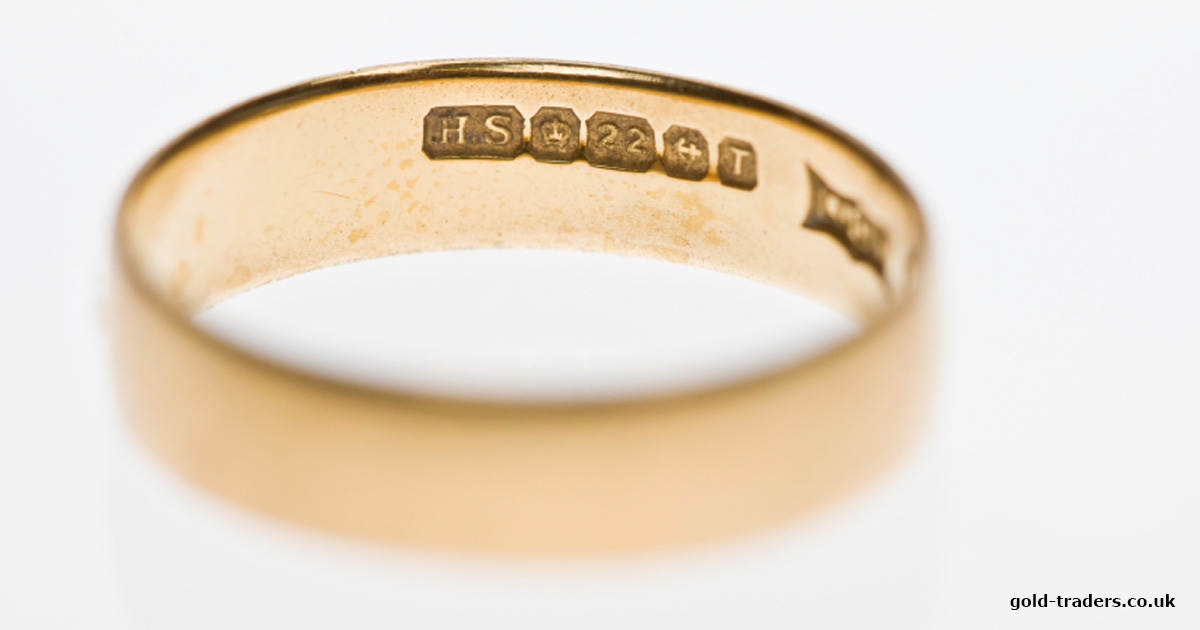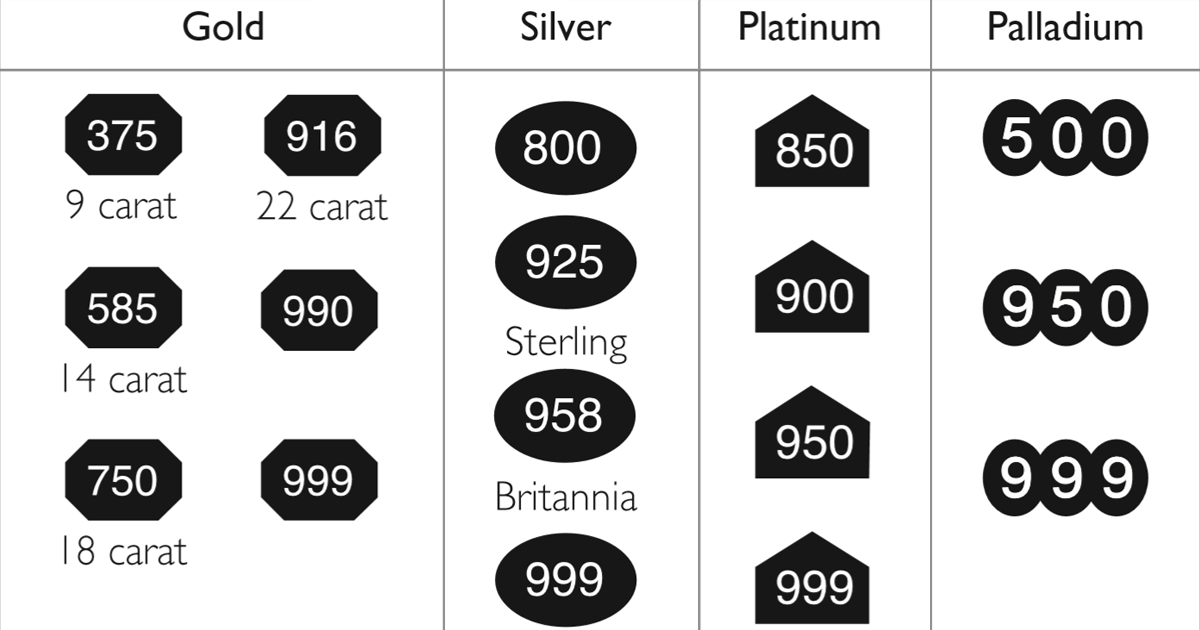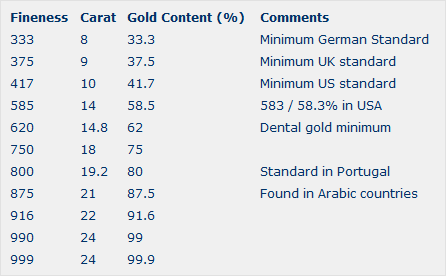Welcome to our simple gold hallmark guide. Since writing this article, we’ve now launched our free-to-use gold hallmark identification wizard, which will help you identify the purity and age of most UK hallmarked gold items.
Hallmarking (also called assay or standard marking) is the official quality control mark that determines the purity of gold and other precious metals.
To receive a price quotation using our scrap gold calculator, you’ll need to know the weight and type of gold you have. Fortunately, modern digital kitchen (or postage) scales are very accurate, allowing most customers to gain a relatively accurate indication of the weight of their gold. Identifying the type of gold can be a little more tricky, which of course requires us to read and decipher the hallmark stamped on the item.
For the purposes of explaining the various marks, we’ll use this ring.

The first mark we see is the makers mark, telling us who manufactured the item (in this instance, H Samuel).
The next mark we see is a Crown or Gold Standard Mark. This was first introduced in 1798 and can now been seen on all UK hallmarked gold that’s 9, 14 18 and 22ct. The crown also appears on old 12 and 15 carat gold, however this was stopped in 1932.
We now come to the mark that tells us the gold fineness (purity). First, let’s look at the shape stamp. You’ll notice it’s a rectangular shape with the corners shaved off. This again tells us the item is gold. An oval stamp would indicate the item is silver, a ‘house’ shaped mark is used for platinum items and three conjoined ovals denote palladium.

The Hallmarking Act 1973 stipulates the use of the above symbols to identify the precious metal. This millesimal stamp number tells us the precious metal content.
It’s worth remembering that other countries have their own hallmarking standards, so the hallmark you see on your gold may well differ. Here is a table of common hallmark fineness stamps:

As our gold ring in the photo was made prior to 1973 (Hallmarking Act), the markings are slightly different, but still easy to understand. In our example, you can see the ’22’ stamp, indicating 22 carat gold.
The next mark tells us which assay office hallmarked the jewellery item. There are 4 assay offices in the UK:
- Birmingham (Anchor symbol)
- Sheffield (Rose)
- London (Leopard)
- Edinburgh (Castle)
As you can see, this ring was assayed in Birmingham.
The final stamp on our ring is the date stamp which tells us the year this item was tested and certified for fineness. Date identification is outside of the scope of this article, but in this instance, the shape of our letter ‘T’ tells us this ring was hallmarked in 1968.
As you can see, a hallmark can tell us a lot about the item. Providing you can identify the type of gold you have and its weight. you can use our gold calculator to work out the value of your item(s).
If you’d like to delve even deeper into hallmark identification, head on over to our gold hallmark identification wizard.
Our Popular Pages
Scrap Gold Price Per Gram ~ Scrap Silver Price ~ Scrap Platinum Price ~ Gold Jewellery ~ Sell Gold Jewellery ~ Value Gold Coins ~ Sell My Gold Watch ~ Sell Gold Bars

